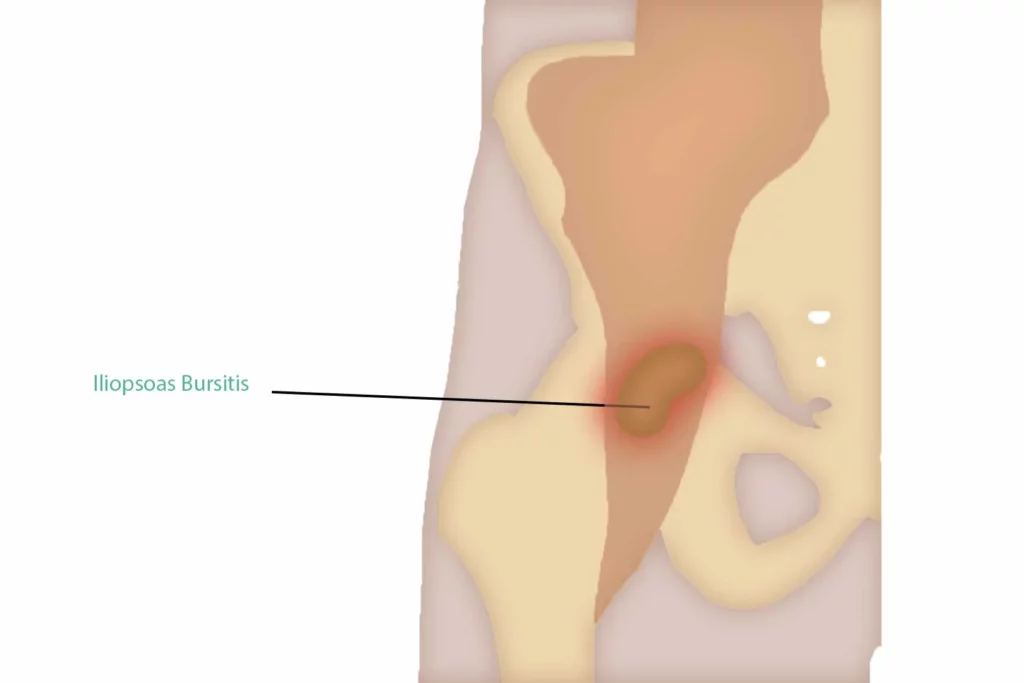Iliopsoas bursitis is an inflammation of the bursa located under the iliopsoas muscle, which is directly in front of the hip. A bursa is a fluid filled sac that provides a cushion and helps reduce friction between the bones and tissues.
Iliopsoas bursitis can be caused by many things such as, arthritis, overuse injury or an acute trauma. There is a risk of iliopsoas bursitis with performing repetitive activities which causes overuse of the joints, muscles, and tendons. Hence why this is common in athletes who participate in running, swimming, and rowing. Individuals who have tight hip flexors can develop this condition as there is an increased pressure which creates friction over the bursa.
Symptoms of Iliopsoas bursitis:
- Pain which starts at the front of your hips and can radiate to your thighs, knees, or buttocks.
- Discomfort when walking uphill/ upstairs and rising from a seated position.
- Stiffness after rest or in the mornings
- Snapping or clicking sounds in your hip.
- Limping to avoid pain.
- Tender to touch.
How can Chiropractic help?
Chiropractic can help your bursitis a great deal! Chiropractic adjustments allows your nervous system to function better and increases joint mobility. Therefore, this increased joint mobility can allow relief from discomfort, decrease in inflammation, and improve the joint flexibility. Chiropractic adjustments will remove excess pressure on the tendon and bursa which will allow it to heal faster and more naturally.
What are some other things you can do to help Iliopsoas bursitis ?
- REST! Decrease any activity that is causing pain and inflammation.
- Apply ice to the inflamed joints to reduce inflammation.
- Increase strength and flexibility through stretching. Stretching can help reduce any tightness which is affecting the bursa.
- Hip flexors stretch: place the knee of your injured leg on the group so your entire lower leg is on the ground. Place your other foot on the ground in front and bend your knee while leaning forward slightly. You should feel a stretch at the front of your thigh. Hold for 30 seconds and repeat 5 times.
- Straight leg raises: this strengthens the iliopsoas and quadricep muscles in your thigh. Lie on your back and straighten your injured leg. Bend the opposite leg so your foot is flat on the ground. Raise your injured leg up so it is in level with the opposite thigh. Pause for a second then bring it back to the ground and repeat 10 times.
- Sitting hip flexion: sit on a chair, bend your knee, and raise your knee as high as possible. Hold for a second then return to starting position. Repeat 10 times.
Prevention of Iliopsoas bursitis:
- Ensure you are maintaining flexibility and strength of the hip muscles.
- Avoid performing repetitive exercises or movements that put strain in the hips.
- Lose weight- increase in weight can put extra pressure on the hips.







